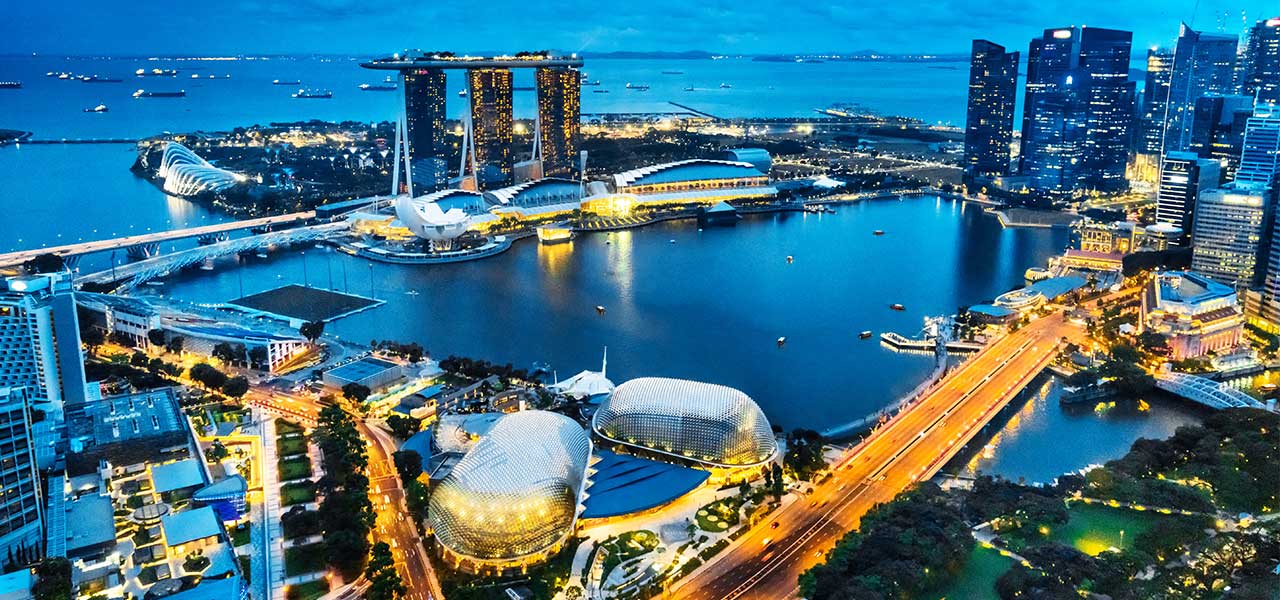
Increasing mobility
in the world’s smartest city
Republic of
Singapore
Population: 5.6 million
Area / Size: 721 sq km (278 sq miles)
Population density: 7,804 persons/hectare (19,276 persons/acre)
Road network length: approx. 3,440 km (2,138 miles).


Background
Singapore has almost one million vehicles – including just over 600,000 private and rental cars – on a road network that takes up 12% of its total land area. That’s a lot of cars, and a lot of roads to monitor. With a high population density and car ownership, traffic jams are a constant danger. Singapore needs to ensure that traffic moves smoothly and safely through its road network.
Another result of high car ownership levels and high population density is parking pressure. Motorists who overstay parking limits prevent fair and equitable use of a city’s attractions for all residents, and this can cause knock-on effects for tourism and local business. Singapore wants to monitor and control parking behaviour throughout the city.
A small change in the traffic around a popular location can snowball into gridlock if not dealt with quickly and smoothly.
70 traffic hotspots monitored
A small change in the traffic around a popular location can snowball into gridlock if not dealt with quickly and smoothly. Singapore needs to ensure that any traffic incidents can be identified and analysed in real time, and responders dispatched as quickly as possible.
This is where SenSen comes to the fore. Our custom-designed solution for Singapore monitors the flow of traffic at 70 locations that are particularly prone to issues, including Changi Airport and many prime tourist attractions. The system identifies road blockages and issues alerts. It recognises dangerous driving behaviours, like speeding or being distracted looking at a mobile phone, and issues infringement notices and fines.
The solution has increased road rule compliance by drivers and decreased the number of gridlock situations in these hotspots.
The benefit of data-driven decisions
Being aware of slowing traffic and restricting the entry of extra vehicles into a strained stretch of road greatly improves traffic flow and makes commuting easier for Singapore’s residents.
When Singapore implemented its SenSen solution, it gained access to a suite of automated tools that report on traffic conditions across the city in real time. The managers of public infrastructure can now make decisions based firmly on reliable and up-to-date information. One benefit has been enhanced efficiency of congestion pricing with tolls changing throughout the day based on current and projected demand on specific roads.
Using automated tools to enable data-driven decision making allows effective management of massive urban infrastructure. Singapore’s roads are faster to navigate, congestion is eased, and popular locations can support a greater number of daily visitors.
SenSen’s solution monitors parking spots throughout Singapore, identifying and locating individual cars.
Parking access made fairer for all people
Parking spots are a premium resource in Singapore. It isn’t fair, or workable, for people to make more use of them than permitted. That means parking limits have to be enforced to ensure that as many people as possible can use each spot. And, therefore, as many people as possible can access and enjoy the attractions and businesses of the city.
SenSen’s solution monitors parking spots throughout Singapore, identifying and locating individual cars. Automated infringement notices help to ensure that drivers don’t overstay their welcome. Real-time data collection like photographs and vehicle registration information provide evidence of the infraction and ensure that the correct person receives the ticket.

